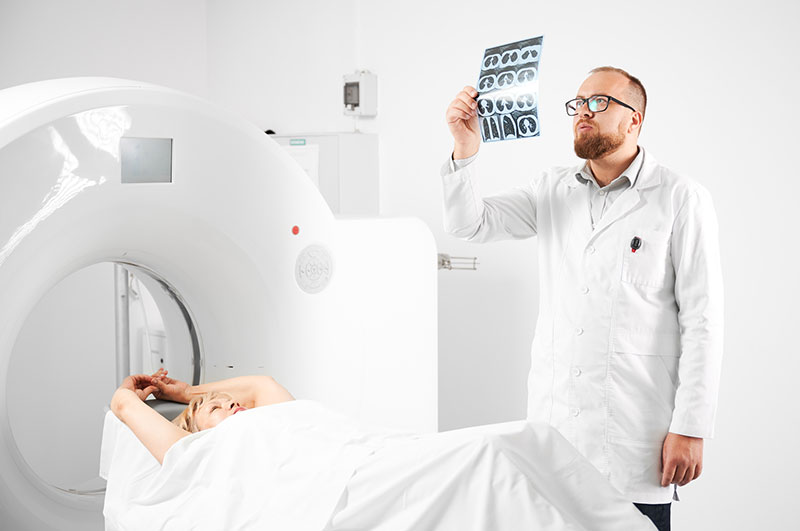
Lung Cancer Screening
Lung cancer kills more people every year than colon, breast and prostate cancers combined, according to the American Cancer Society. One reason for the low survival rate is that lung cancer is often diagnosed in its later stages, when it is most difficult to treat and the course of action for patients is limited.
If you are at high risk for lung cancer, your chances of survival may improve if lung cancer is detected in its earliest stages. By making an appointment to have a low-dose-radiation CT scan (LDCT), survival rate may improve through earlier detection, accurate diagnosis, accurate localization and therapy. A lung screening uses no contrast dyes and a LDCT scan is safer for patients. The scan itself only takes 60 seconds to complete and is covered by Medicare and most insurance plans.
Who is Eligible for Lung Cancer Screening?
- Age 55 to 77 years old
- A 30-pack year or greater history of smoking (a “pack year” is calculated from multiplying the number of packs of cigarettes smoked per day by the number of years you have smoked)
- Either currently smoke or have quit in the past 15 years
- No symptoms of lung cancer such as cough, shortness of breath or chest pain
LDCT screening for lung cancer requires a referral from your doctor. Talk to your doctor about your risk for the disease and about your eligibility for screening. He or she will order the CT scan and can discuss the risks and benefits of the test, explain the results and organize any further follow-up.
Tests Included
- Sample Type: Blood & Urine
- HSA/FSA: Accepted
- Collection Method: In person at a Labcorp location
- Results: 1 day from when your sample arrives at our lab
Preparation: Fast for 12 hours (no food or drink, except water) before sample collection. If you’re taking a supplement containing biotin (also called vitamin B7 or B8, vitamin H, or coenzyme R), commonly found in products promoting nail, skin and hair health, it is recommended that you wait at least 72 hours from your last dose before sample collection.
Remove any metal you’re wearing prior to the scan. Metals can interfere with the imaging, so you may be asked to remove any metal such as jewelry, glasses, hearing aids and dentures. Additionally, wear clothing that doesn’t have snaps or metal buttons. Do not wear an underwire bra. You may be asked to change into a gown if your clothing is determined to have too much metal.
If you currently have signs and symptoms of a respiratory tract infection or if you recently had one, inform your doctor. Your doctor may recommend delaying your screening for a month until your symptoms go away. Respiratory infections can result in CT scan abnormalities that may require additional scans or tests. By waiting for the infection to heal, these extra scans can be avoided.
Also, check with your health insurance company to see if LDCTs are covered. Health insurance companies typically cover screenings that meet the U.S. Preventive Services Task Force, which recommend yearly screenings for individuals who have a 30-pack year history, beginning at age 55.
You will lie on your back on a long table for the exam and will be asked to lie very still as the table slides through the middle of a large machine which creates the lung images. The table goes through the machine initially to determine the scan’s starting point. When it is time to start the scan, you may be asked to hold your breath briefly so a clear picture of your lungs can be obtained. You may hear the machine make clicking or knocking noises. The actual scan takes less than a minute. You can expect your appointment to last about half an hour.
- After the examination, a radiologic technologist will examine the images and transfer them to the radiologist for interpretation. The radiologist will then evaluate the images and create a report of the findings to your medical provider.
- Results are typically available within 2 to 4 hours..
- It is recommended that you schedule a follow-up appointment with your physician to discuss the results.